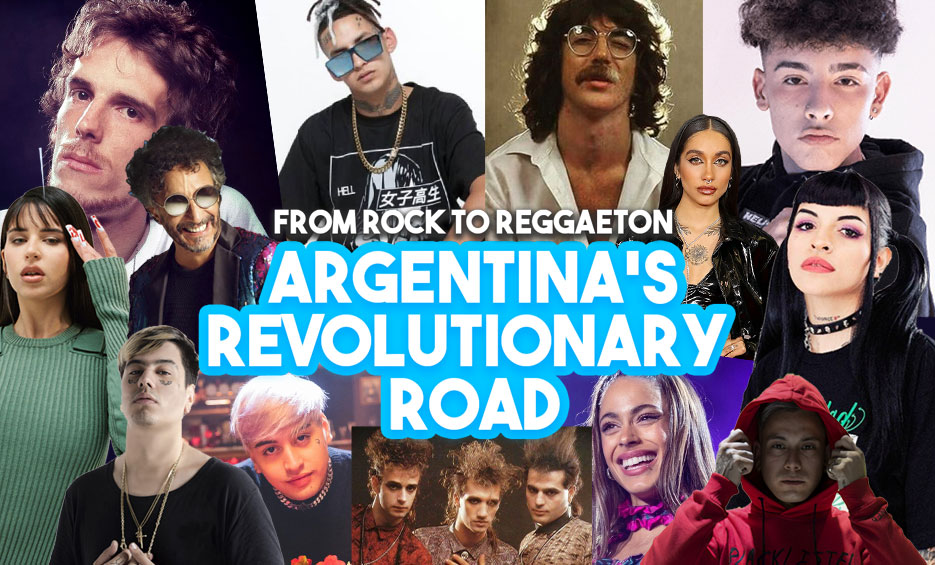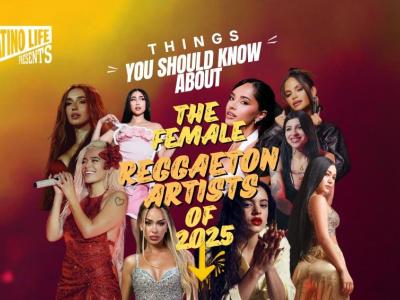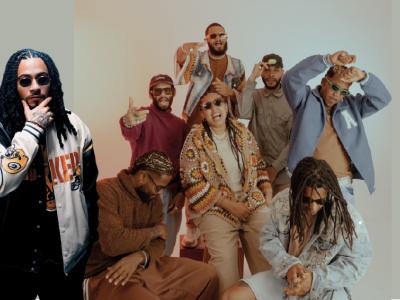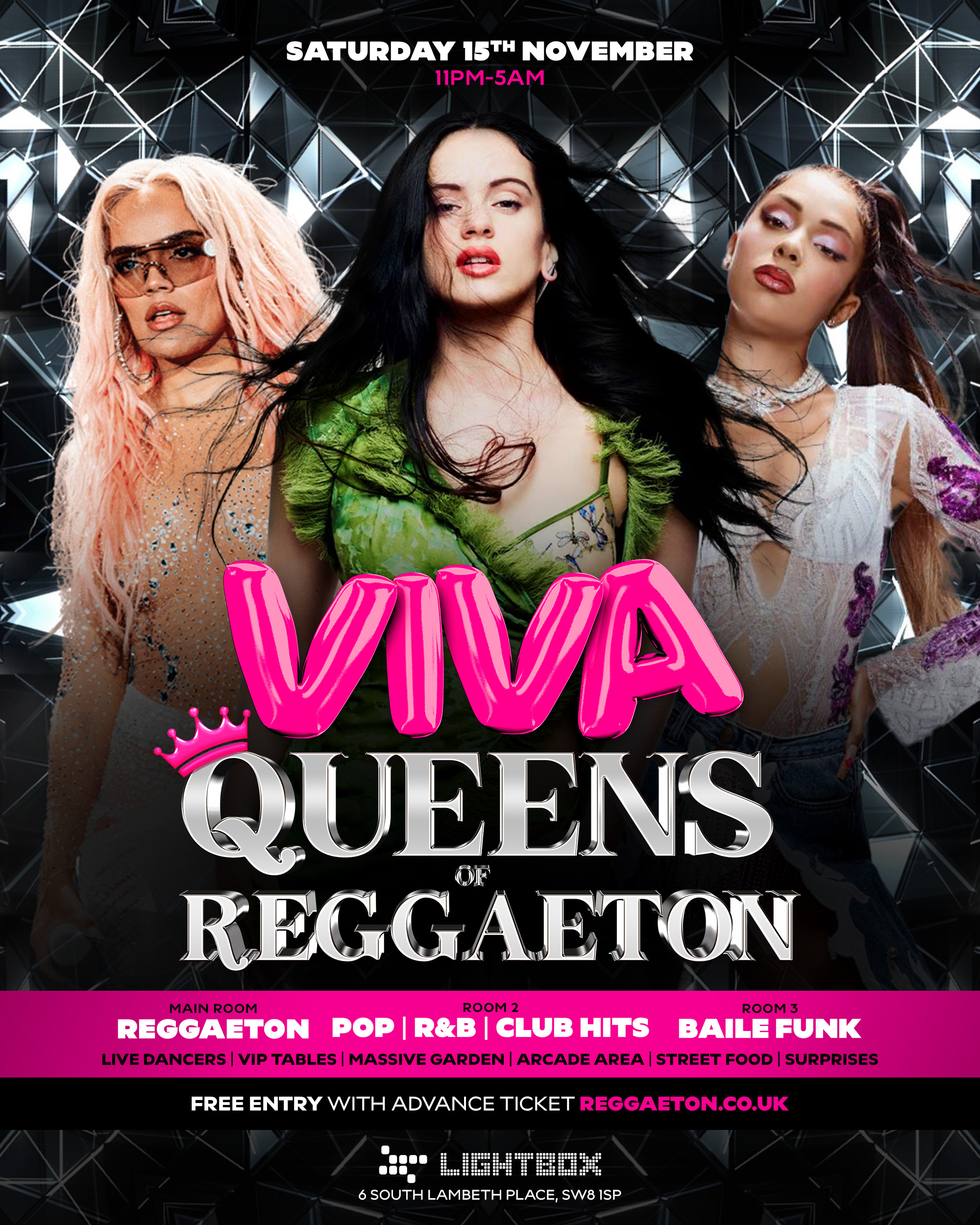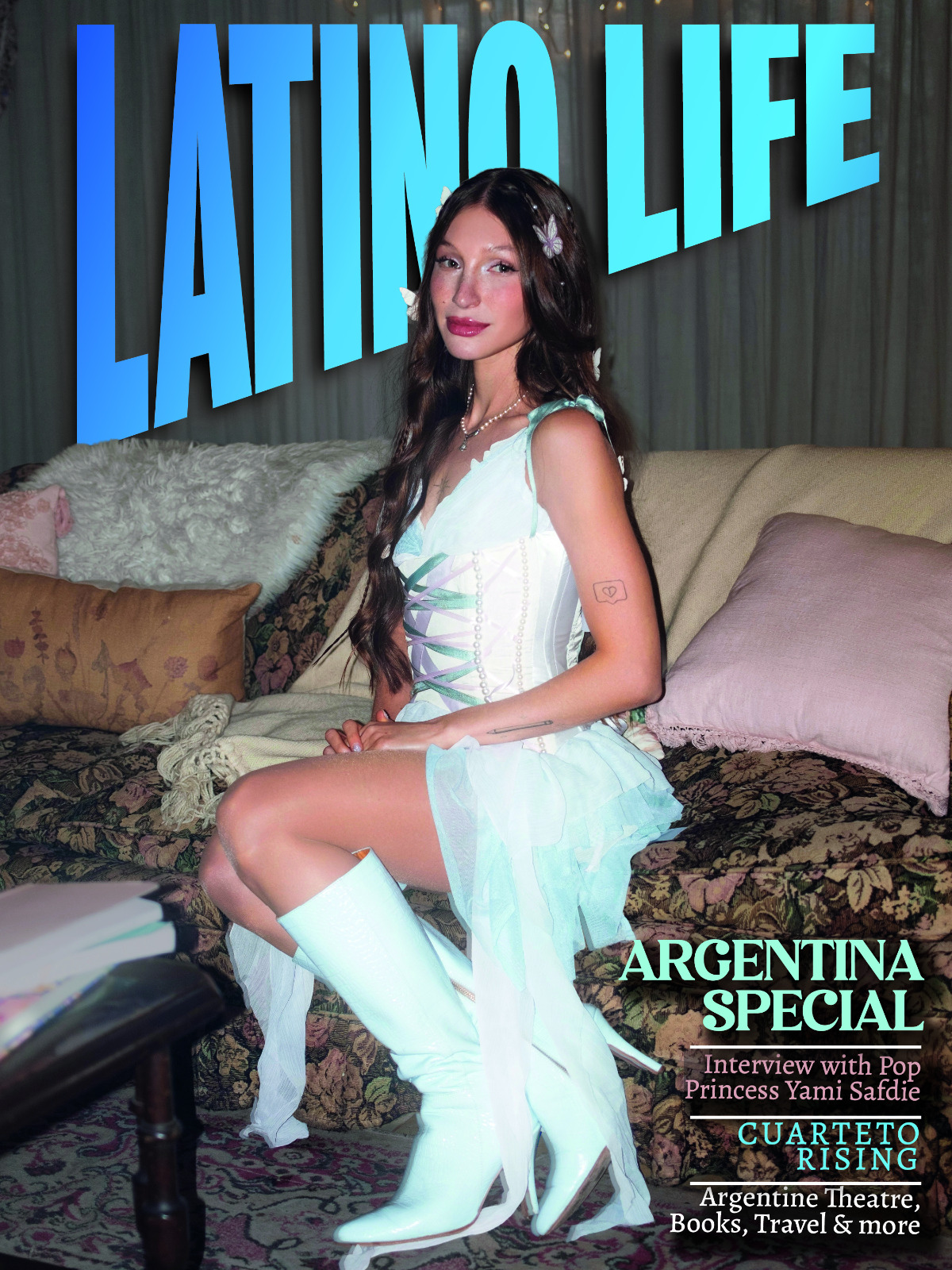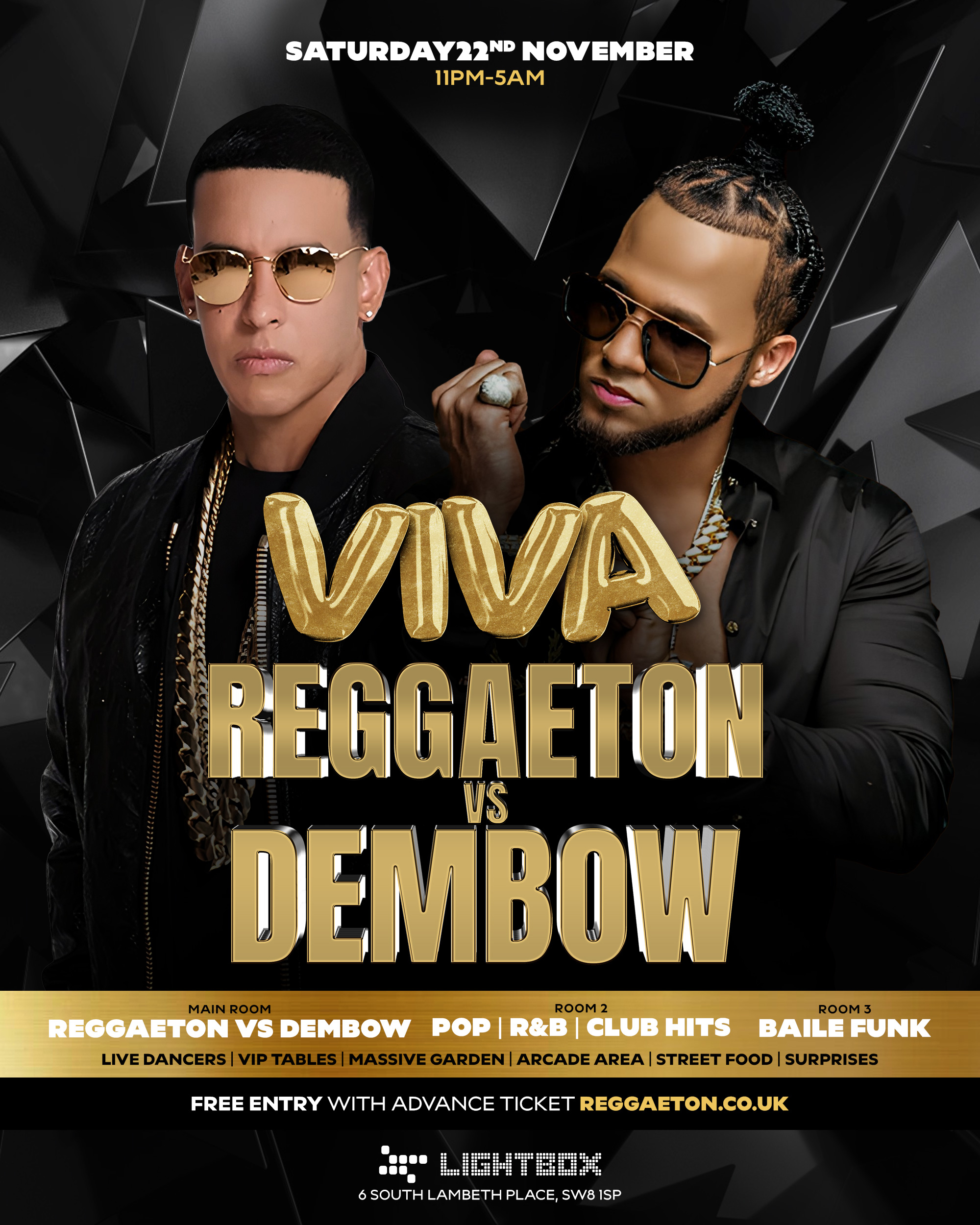The slow pace of the guitar begins with a mix of regggaetón and hiphop rhythms, but then the lyrics arrive and the rap transforms into a poem, a romantic tale. This is the sound of Adan y Eva from Paulo Londra which can be heard around the world's nightclubs. In 2018, the 20-year-old Argentine urban artist broke the Billboard Top 10 and Adan y Eva now has over 600 million streaming hits.
Londra was first discovered in Buenos Aires back in 2017 when his battle with another Argentine rapper Duki appeared online. “It was the turning point for a new generation of urban artists emerging from Argentina, because it showed a new kind of style," says Reina, manager of various up and coming Argentine rappers. But nobody was taking any notice.
Then, in 2018 a young Argentine producer called Bizarrap began to stream footage of more local rappers freestyling in his studio. These were to become the now famous “Bzrp Music Sessions,” whose last 15 sessions have accumulated a 2 billion streams on YouTube. Last year, Bizarrap and Quevedo’s club anthem “Bzrp Music Sessions, Vol. 52” became the second Spanish-language song to reach no.1 on Billboard’s global charts, and his most recent “Bzrp Music Sessions, Vol. 53” with guest Shakira, just broke the world record for the most streamed song in 24 hours. The general punter might be talking about Shakira's beef with Pique, but music people are talking about the Argentine producer whose platform she chose for maximum reach.
Indeed, we are talking about Bizarrap and the plethora of new Argentine artists that are dominating the global Urban Latin charts once monopolised by Puerto Ricans and Colombians. Joining Londra, the likes of Nathy Peluso, Trueno, Cazzu, L Gante, Maria Becerra, Khea, Nicky Nicole, Zaramay are getting insane streaming numbers. In 2020, Londra performed with Dave on Ed Sheeran’s No.6 Collaborations Project and in the same year became Spotify’s most streamed artist for 13-17 years olds. Since her “Bzrp Music Sessions, Vol. 36 ” 2 years ago, Argentine-born, Spanish-raised Nathy Peluso has accrued 1.5 billion streams, performed at Coachella last year, and is the current face of Spanish clothes brand Desigual. This is just the tip of the iceberg...
So how did Argentina come to dominate the urban Latin music scene?
From Rock to Trap: Decades in the Making
In the 70s, 80s and 90s, the most popular music in Latin America was rock, and that rock came mainly from Argentina. From Soda Stereo to Charly Garcia via Fito Paez and Luis Alberto Spinetta, Latin rock bands across the continent copied their Argentine icons, who themselves had taken inspiration from British rock and pop. Until, that is, reggaetón arrived in the 00s, and suddenly Argentina´s musical dominance was replaced by the beats of the tropical Caribbean.
Argentina may have been the kings of rock en español...but what many don’t know is that reggaetón arrived on an already fertile ground of Latin hiphop, a genre that had been growing all over the continent since the 90s, particularly in Chile and Argentina, despite both country’s lack of indigenous black music culture. This generation looked to the US more than Europe, the likes of Eminem and Dr Dre the icons they wanted to follow.
Freestyle battles were taking place regularly in plazas and parks in Buenos Aires and other Argentine cities. So, in 2005, when Red Bull sponsored la batalla de los gallos throughout Spain and Latin America, offering rappers a platform to show off their skills, hundreds of aspiring urban artists latched onto the platforms, paving a way for them to evolve and to reach audiences.
"When the Red Bull battles were released, it became something huge in Latin America,” remembers DJ Jose Luis, who pioneered the urban Latin scene in the UK with the now legendary La Bomba nights at Ministry of Sound in 2005, and currently runs the UK’s weekly urban latin nights Viva Reggaeton. “But what is most interesting is that the winner of the first ever Red Bull battle was an MC named Freskolate, not from Puerto Rico or Brazil, where there is a strong history of Afro-Latin beat-based music, but Argentina where there is none."
Not only that, DJ Jose Luis asserts, when the Latin Grammys first introduced a hiphop category in 2001, it is Argentine outfit Sindicato Argentino del Hip Hop that wins the first award. Other Argentine groups such as Illya Kuryaki and the Valderramas were also forging the generational bridge between rock and hiphop, and literally so; Illya Kuryaki’s bandleader, Dante Spinetta, was son of the great rock legend Luis Alberto Spinetta.
Perhaps it’s not such a surprise, argues Jose Luis, that Argentina should produce so many good rappers, with the lyrical tradition it has: musical literature arose from Argentina's rock golden era; its cantautores were intellectual poets, loved for their lyrics as much as their music.
"Argentina has always had an innovative way of communicating. They are good talkers, they know how to play with words and make them mean something special," says DJ Jose Luis.
Argentine Urban: An International Phenomenon
Commercially, however, nobody was taking any notice of Argentine urban music. Until, an Argentine rapper called Ysy A and radio presenter Matias Berner decided to fund their own national touring rap battles called the Quinto Escalón in the streets and squares around the country. From these battles, artists like Duki and Paulo Londra emerged, along with a new type of urban style very particular to Argentina, adding local sounds to hiphop and reggaetón and a delivery infused with that Argentine timbre, almost Italian-sounding in its sing-song rhythmic pattern, that is so distinctive.
The best example of this particular Argentine style is L-Gante, who became an international phenomenon after his 2020 song L-Gante RKT. DJ Jose Luis explains:
"The beats that L Gante creates have an element of cumbia villera, an idiosyncratically Argentine interpretation of cumbia. He doesn´t sing like a Puerto Rican; he sings with a porteño accent, straight out of the villa, which gives his music authenticity, and I find genius."
For Argentines, L-Gante is the musical ambassador of the villa. "He is del pueblo. He acts and dresses like a proper representation of modern Argentina,” agrees Reina. “We are proud people, and when we see L-Gante coming from the street, we get sentimental and attached to him because, as you can see, he was able to make his dreams come true; he fought and struggled, but now he is on top, being heard all over the world, in places we thought he was not going to arrive, like Greece and Egypt. We can´t really believe it!"
In contrast, Paulo Londra has a less parochial, more international style, his lyrics are more romantic. He talks in love letters or poems. DJ Jose Luis believes this style, even though it is less distinctive, competes with the likes of Camilo or Maluma because of its literary quality, a heritage inherited from Argentine rock.
DJ Jose Luis and Reina both agree that the success of these artists, like their forebears, is a combination of lyrical quality and a national self-made music culture that has always been driven and ambitious.
“We don’t wait for anybody. Big labels aren’t going to take risks so artists and independent producers have invested a lot in producing quality in both the music and video clips," Reina comments. "Today, uploading music is more accessible thanks to Spotify, YouTube or other platforms that let artists submit music without a music label behind them.”
“Argentina always had a self-starting culture, when the currency crashed in the early 00s people would take over factories and get them back to productivity. I can see the same spirit with the music,” says Venezuelan-born DJ Jose Luis. “When we fell in love with Argentinian rock in the 80s and 90s we only heard a few of their artists but then we started digging and found a whole musical universe. I am finding the same thing with urban music, you hear Trueno and Duki and a few more and you start digging and they have their own thing, not caring about whether anyone is listening.”
One of the drivers of this success is undoubtedly Gonzalo Julián Conde, or Bizarrap, as he is widely known who, at only 24 years old, was nominated for a Latin Grammy for best producer. Back in 2017, he began uploading videos of the batallas to Youtube as well as his own work. He started to produce songs in 2018 and invited Argentine artists to his studio to freestyle, in a simple setting but with quality production which is incredibly appealing. This became a massive platform for them and now every wants to be part of BZRP Music Sessions, as Shakira can testify. Bizarrap has gone from a music geek in a back room to maker of global hits. “Bizarrap’s PR and distribution strategies are astonishing," Reina says.
Another important detail is that the Argentine music market is also self sufficient, so artists are not working from a desperation to be global stars. Going abroad is an achievement but not a need; Duki sold out four stadium gigs last year in Buenos Aires, without having the global audience of Bad Bunny or Maluma. This acts as a great incentive for new Argentine artists to give it a shot too; success is accessible and achievable, and they can do it on their own terms, which liberates creativity.
What does the future hold for Urban Argentine?
Since 2017, many Argentine artists have experienced unprecedented international success. In that year, Nathy Peluso independently released her first seven-track EP, Esmeralda. Now signed to Sony, she has 1.5 billion streams, is at the top of charts around the world, headlined at Coachella 2022 and is the current face of Spanish clothes brand Desigual.
Described by NME as ‘Rosalía, Rihanna, Grace Jones and The Terminator in one bewilderingly awesome package,’ DJ Jose Luis argues “Nathy is more original than Rosalia. Her music is unique and her style and voice are fascinating since she can play and perform in different styles with ease. Other Argentine female artists such as Tini, Cazzu, Maria Becerra and Nicky Nicole, are having particular success in a genre that has not been very welcoming of female talent, if not blatantly mysogynistic.
Meanwhile, a plethora of artists are waiting in the queue. Pivodi, one of Argentina’s new wave of aspiring rappers, represented by Reina, is hoping to make it. "I am ready; I want my music to leave Argentina and reach other countries in Latin America or Europe. I have an amazing team behind me who are giving me the opportunity to perform in different countries."
"It is the team effort which allows many artists to create a name around the world. We are deeply passionate about our work. On the inside, we are very disorganised, to be honest. But because we care so much about our work, we were able to find a focus and organise ourselves,” Reina explains. “It’s a step-by-step process. The most important thing is to work in a team of people who you can trust, and who are efficient so it’s easier for labels outside Argentina to work with them.”
The explosion of artists like Duki, Bizarrap, Nathy Peluso and Trueno, has whet the appetite for many more who, in typical Argentine style are blazing the trails, without fear or inhibitions, always looking to innovate and move forward. As Paulo Londra says in his hit song Tal Vez: "What do I have left, compa? Do tango? I am tired of doing all the genres; let´s create something new now."


